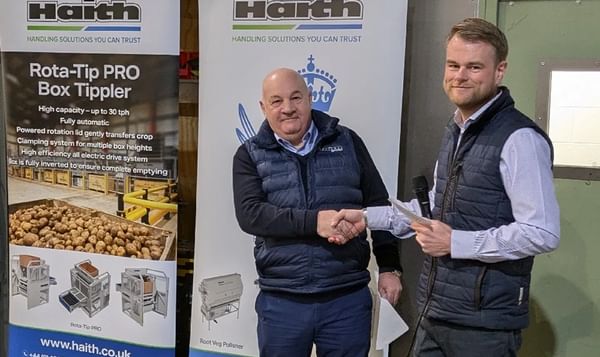A new United States Potato Board (USPB) demand metric was introduced by President and CEO Tim O’Connor at the USPB’s 40th Annual Meeting, March 14-16, at The Broadmoor Hotel, Colorado Springs, CO.
For the past 10 years, USPB Board Members, representing growers and the potato industry from each US production region, have been familiar with the USPB’s “Net Negative Attitudes” measurement. At the 2011 USPB Annual Meeting, O’Connor reported this value had reached a nine-year low of only 18 percent of consumers who considered potatoes to be fattening and nutritionally deficient.
At this year’s meeting, O’Connor introduced the “Net Positive Attitudes” metric, a new and constructive way to definitively reflect the value of the USPB’s demand building programs and strategies on the market for potatoes and potato products. The “Net Positive Attitude” score is a composite metric measuring people who rated potatoes as “excellent” for “potatoes are healthy for you” AND “convenient” AND “flavorful” AND “fresh”.
Obviously, it is much more difficult to get into the net positive group than it is the net negative group since a person must agree at the highest level to ALL of these positive beliefs about potatoes. For the total US (2011 vs. 2012), the net positive score went from 19 to 21 percent. For the USPB’s “Linda” target, the net positive score increased from 23 to 25 percent!
“I’m tired of talking about ‘Net Negative Attitudes’ towards potatoes,” O’Connor said during his address to the USPB Board Members. “Linda is now more positive about potatoes than she was prior to the low-carb dieting trend which began in 2004. We’re ready to play offense. Defense is important, but let’s move the ball down the field. Attitudes towards potatoes have changed, and this demonstrates an actual increase in demand.”
Demand is at the top of a list of issues challenging the entire potato industry. These biggest potato industry challenges are not simply related to one sector, they’re affecting fresh, frozen, chip-stock, dehy and seed across the board. The other issues are obesity, low-carb diets, acrylamide and the changing lifestyles and meal preferences of consumers.
“Potatoes are challenged to fit into the lifestyles of consumers,” O’Connor said. “With two income households, busy lives and quick dinners, the consumer has changed. The potato industry kept doing what it always did, hoping consumers would come back. As consumers’ tastes and preferences changed, potatoes have been challenged to fit into cuisines like Thai, Italian, Chinese or any other ethnic meal needs.”
O’Connor also noted the development of the “Why Buy US” USPB international frozen program. It demonstrates conclusively why customers in foreign markets should buy US fries even though cheaper alternatives might be available from other countries.
“This effort involved two trips around the world to interact with customers and find out why they prefer US fries and how our support and technical marketing expertise helps them,” O’Connor said. “An intuitive and straightforward demonstration shows importers how one kilogram of frozen US fries produces more servings per case than one kilogram of European sourced product.”
The value of US exports reached $1.5 billion during 2011. Eighteen percent of all US potato production is now being exported. That’s almost one out of every five rows of US potato production leaving the United States for foreign markets.
“The importance of the USPB’s work is demonstrated in the new programs and industry partnerships that have been developed,” O’Connor said. “These will continue to create new opportunities for growth, and it’s recognized with new funding and support. I’m excited about where this industry is going.”
For more information on the USPB as the nation’s potato marketing organization, positioned as the “catalyst for positive change,” and the central organizing force in implementing programs that will increase demand for potatoes, please visit www.uspotatoes.com.








